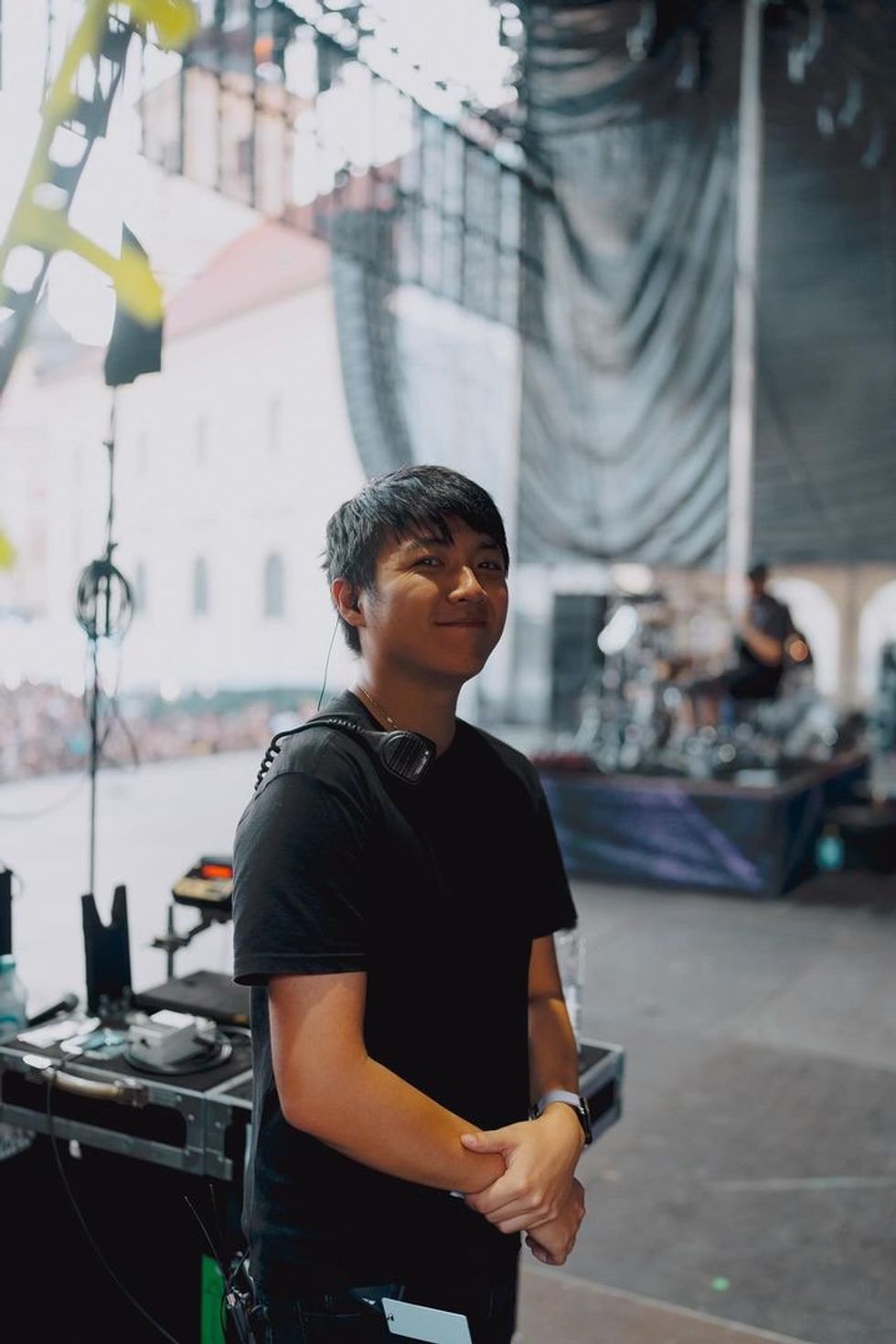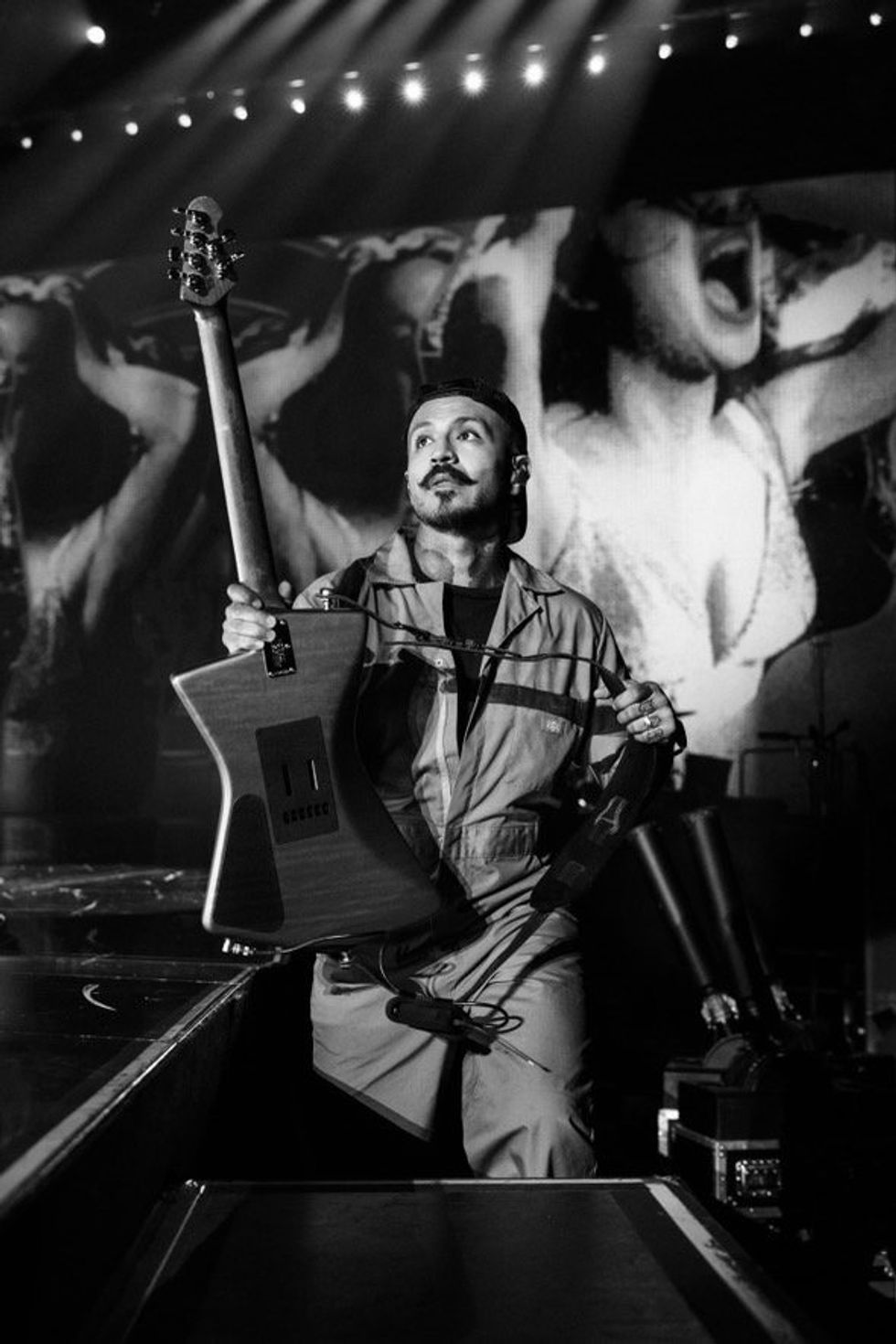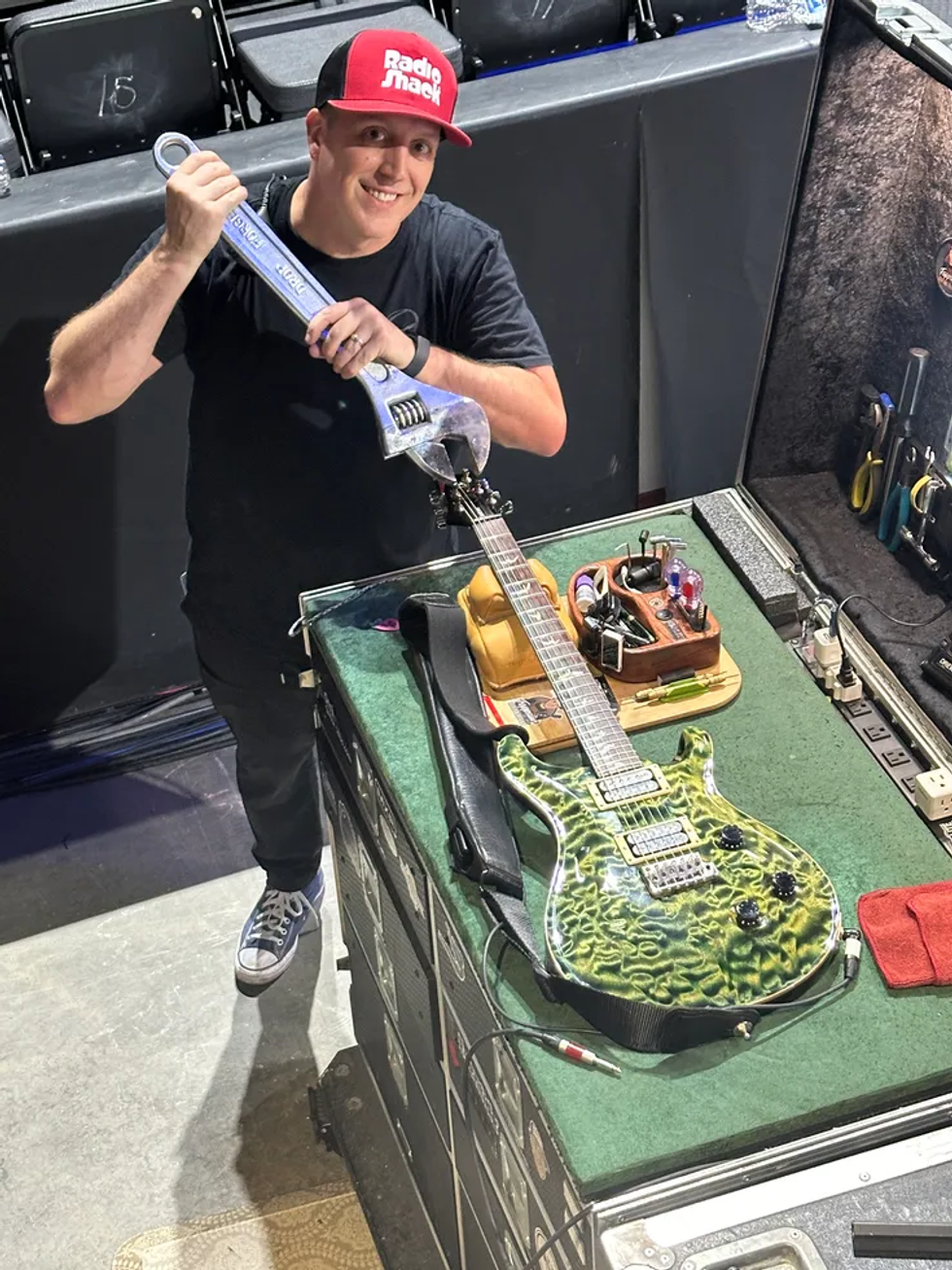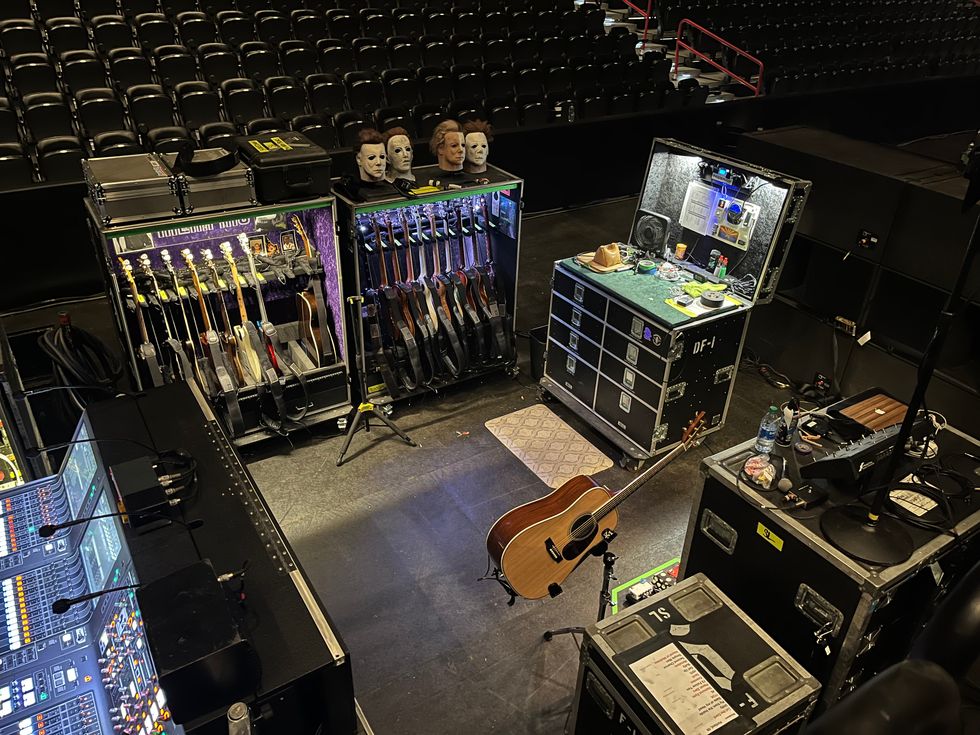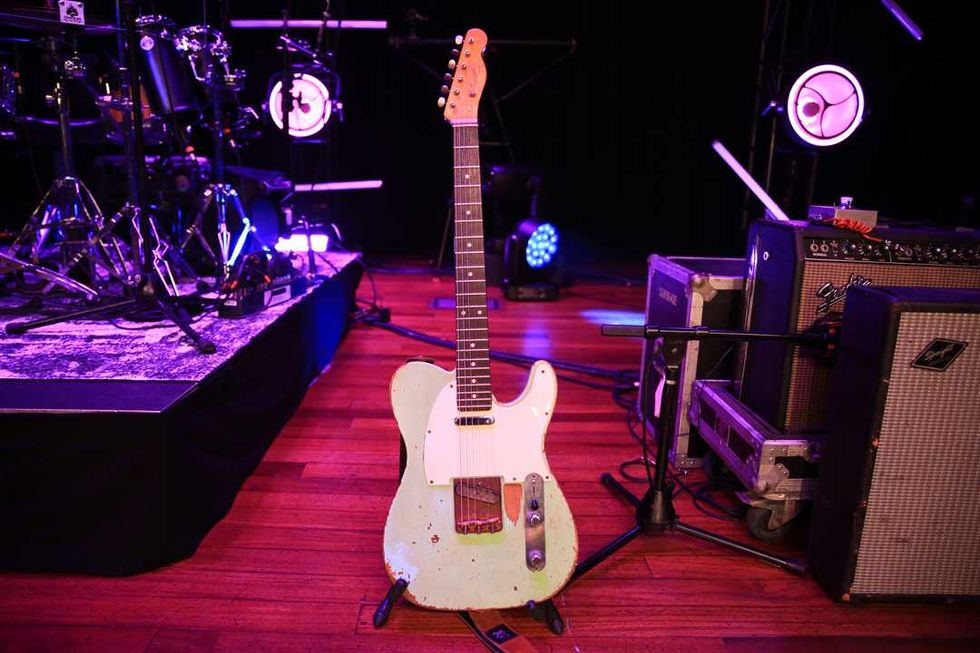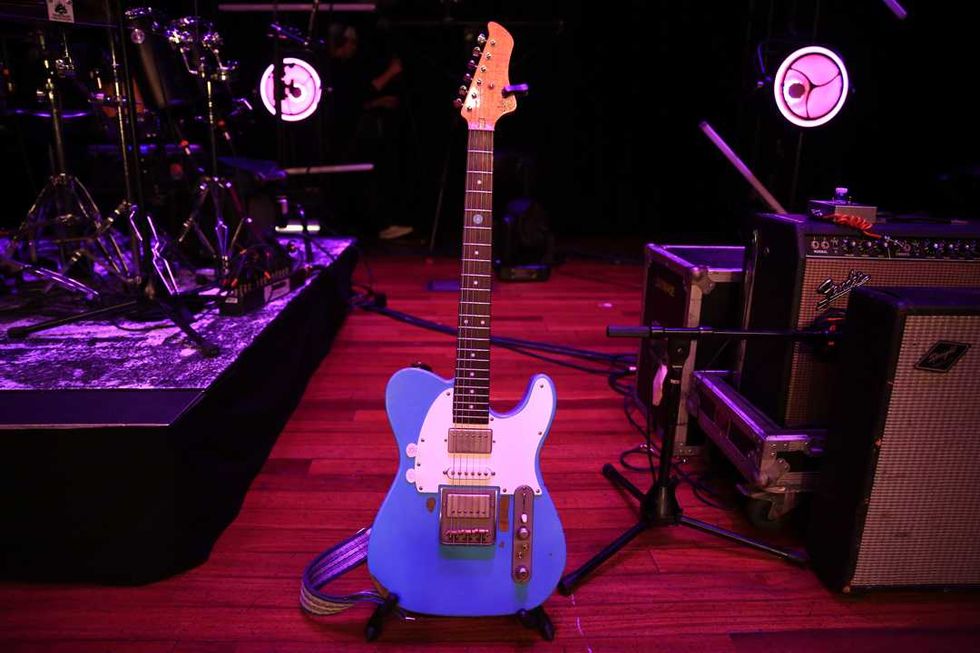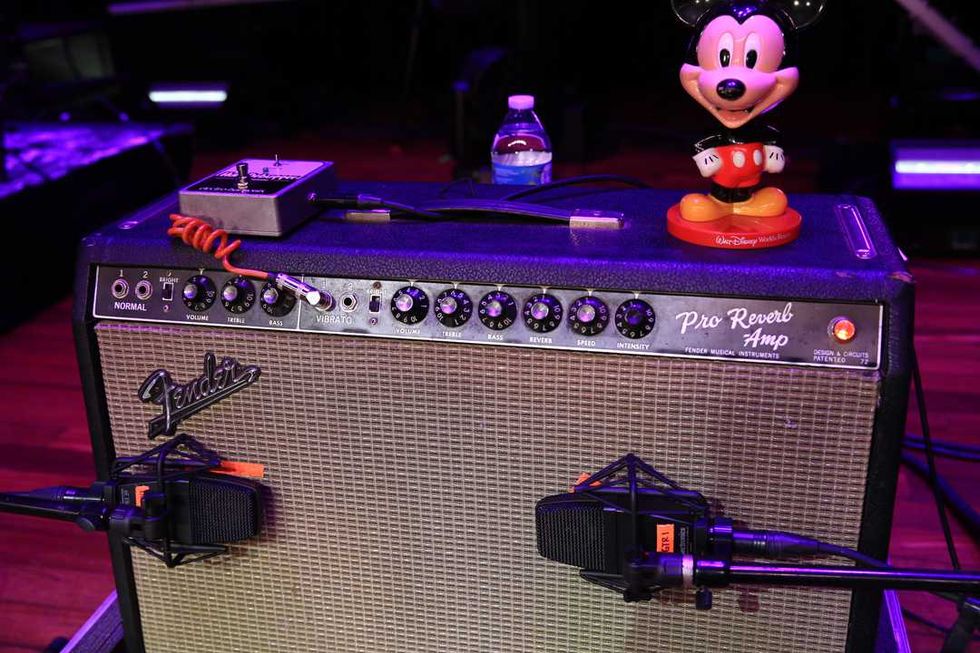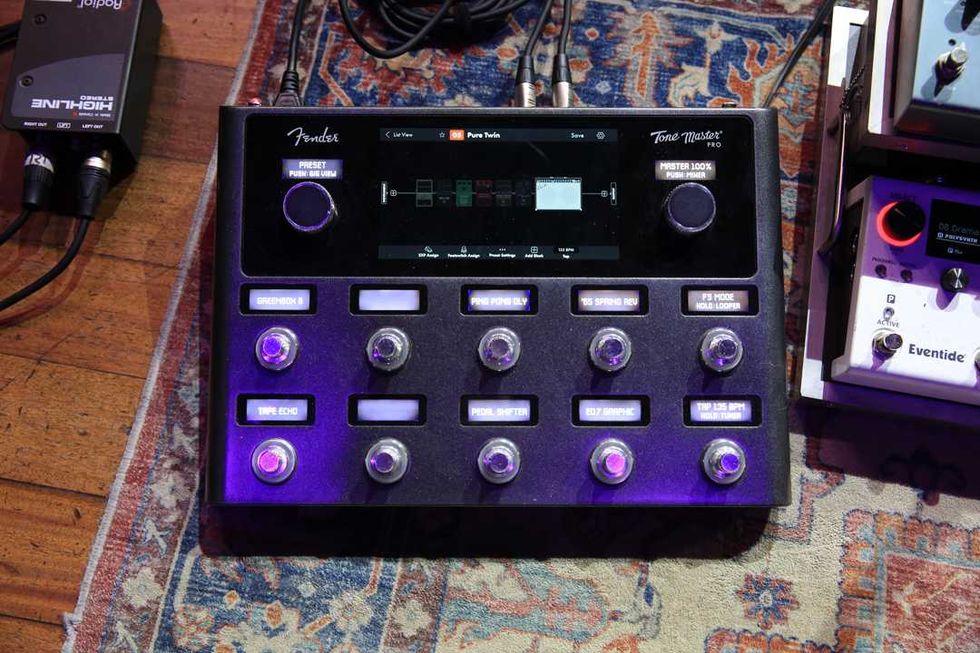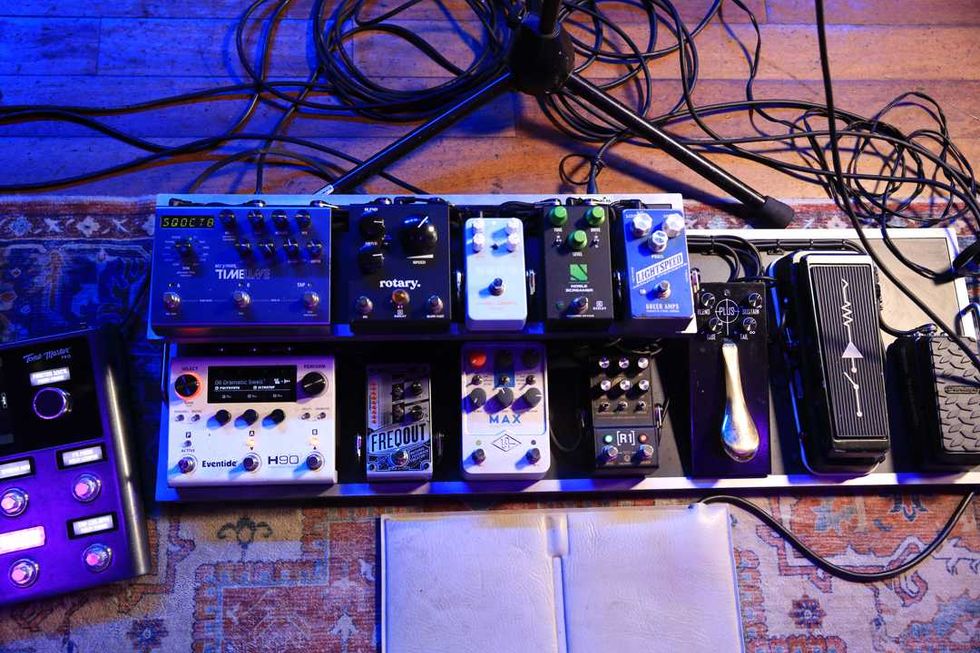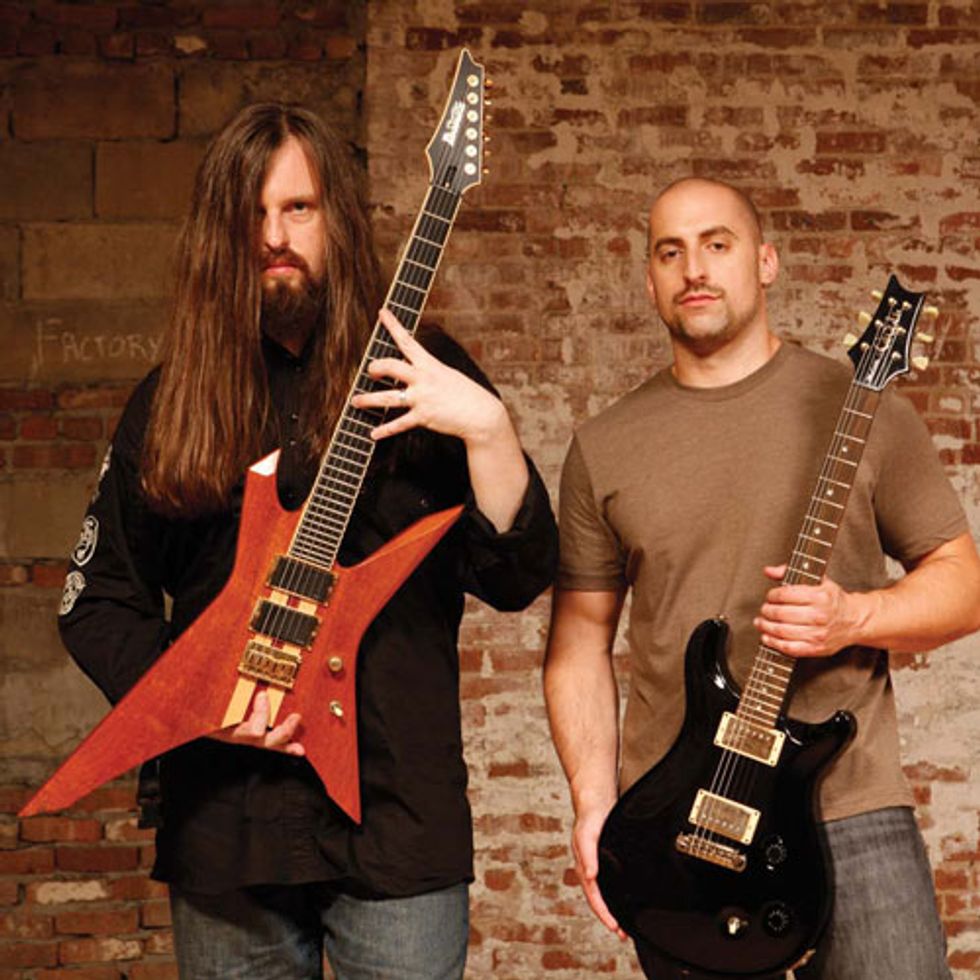
Oli Herbert (left) with his Ibanez Xiphos and Mike Martin with his PRS Custom 22. Photo by Justin Borucki
Evolution can be volatile for a band. How do you continue to evolve without alienating the fans who were there at the beginning? It’s a serious question in light of the tough economic times that have put concert ticket and album sales at an all-time low. Do you continue the recipe that guarantees success, or risk failure and pursue your changing vision with the confidence that your fan base will follow?
All That Remains chose the latter. Their new release, For We Are Many, is their fifth studio album and it continues their legacy of reaching beyond their metalcore beginnings. Guitarists Mike Martin and Oli Herbert offset their brutally synchronized 6-string assaults with lyrical melodies and cascading counterpoint, all in service of tuneful compositions. We recently caught up with Herbert and Martin to talk about the strong hooks, clean vocals, and dynamic playing that works hand-in-hand with jackhammer rhythms, death growls, and hammer-fisted riffage on For We Are Many.
How do you divide guitar duties between yourselves?
Oli Herbert: I usually come up with a lot of the guitar riffs. Mike has good judgment when it comes to what’s too much. He’ll say, “That’s a little crazy—maybe you should tone it down a little bit.” He’s good at arrangement. He’ll say, “How would that sound with the drums,” whereas I’m thinking about putting it with a string section. I kind of orchestrate, but we all contribute to creating the songs. Mike also has a really good right hand—especially for the fast, rhythmic triplet stuff. He has an excellent sense of timing that I don’t possess. My hand is not as clean as his, so in the studio Mike takes care of all that stuff. Things that involve more left-hand finesse and chord switches, I’ll take care of.
Mike Martin: We’ve done it enough times that it’s pretty easy to sort out. If someone has a riff, we can tell right away who’s going to record it. Whoever records the first part of the riff has to record the harmony to it, just to keep the tightness with the hands. If it’s a really difficult righthand riff, I’ll usually track it. If it’s something really difficult with the left hand, Oli usually takes care of it.
I understand you and your bandmates have very different influences. Does that make it difficult to write parts that everyone is happy with?
Herbert: The disadvantage is that it does make it difficult to get people to agree—trying to work around everyone’s completely different take on what the music should sound like. But it’s an advantage because I think we have a unique sound. Obviously, we’re not a groundbreaking band—we’re not trying to be like Frank Zappa or something like that—but I think all our elements combine to create something unique that you don’t hear in any other bands.
Martin: It’s easier than you may think, considering the differences in what we all like. There’s a lot of clashing personalities with music in this band, but everybody understands what variety will bring to the song. There are a lot of bands out there that, to me, sound really flat. A lot of straight thrash-metal bands bore me to tears.
When you say there are differences, are you talking polar opposites—like, there’s someone in the band who wants more of a Dixieland jazz sound?
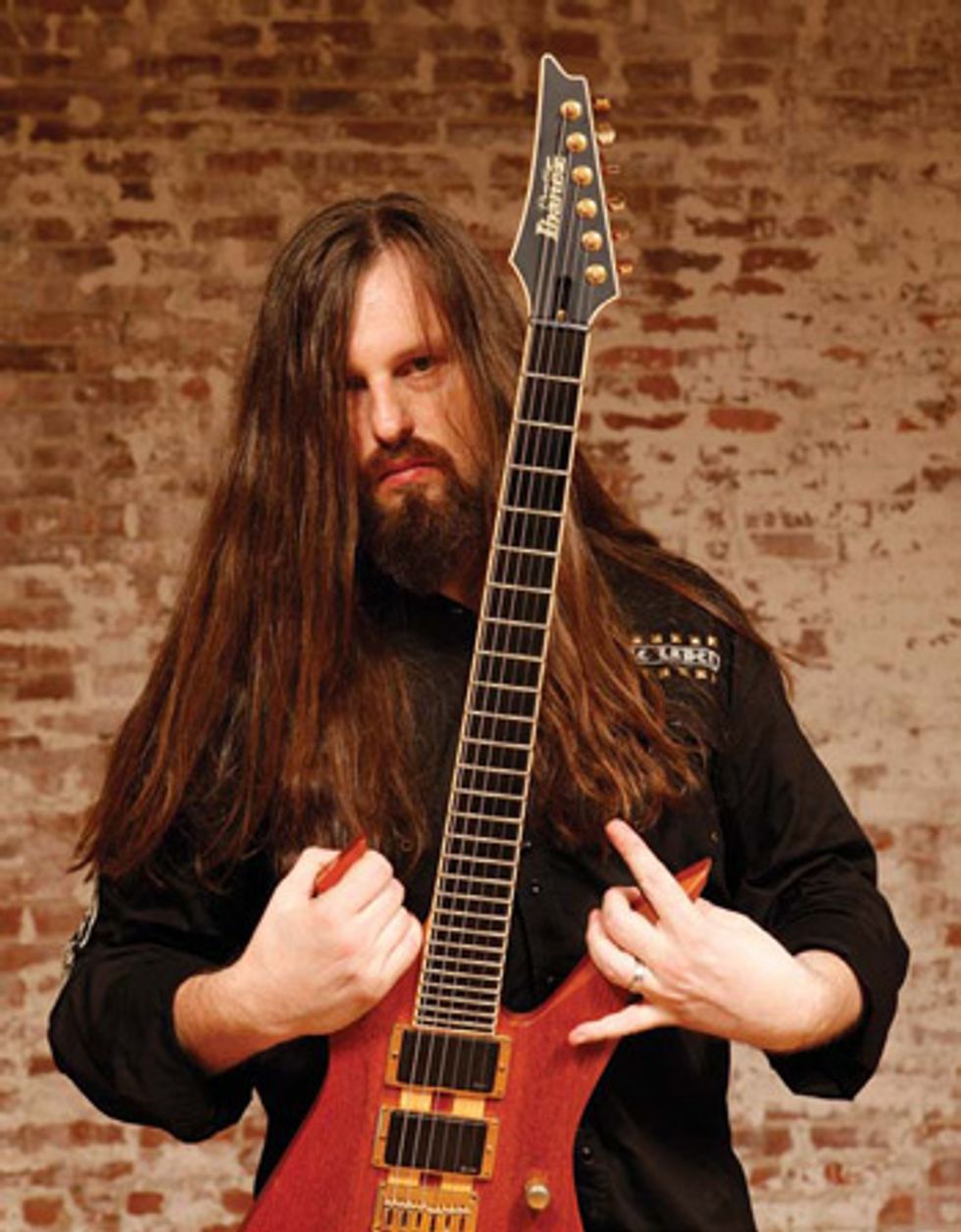 |
Martin: But I don’t come into practice saying, “John Mayer would play it like this!” [Laughs.] I would never come in with a riff inspired by John Mayer—it wouldn’t fit. I don’t do too many leads, but when I do play them, you can tell they’re a lot bluesier. I like a lot of blues guitar players. Oli plays such technical guitar solos— he’s a note festival—so I like to do something completely out of the norm. Phil and I are basically there to create some air. It’s a cool contrast and it works out really well.
Compared to your previous record, For We Are Many has more dynamics, more melody, and more hooks. In my mind that’s a good thing, but some of your fans are like, “They’re trying to be more pop and mainstream!”
Martin: That crap has been happening for the last six years now. As soon as we had one part that had actual singing—which came out seven years ago—people started running their mouths. Those black-T-shirt metal kids are just scared to death of melody. I never got that. I never came from that whole school of thinking where it has to be screaming and brutal, and if it’s not it’s “gay.” Ever since we’ve had singing, there’ve been people who are just like, “Oh, they’re going more pop.” It’s just annoying. We’ve had singing on the last four albums now, and people keep talking about it. It’s stupid.
Herbert: We’re trying to create music that is musical and listenable. We’re not a death metal band. We never have been. We have some heavy stuff on this album, but we’re not going for that. We’re a melodic metal band. That’s the best way I could describe it, so we’re going to piss some people off.
Do you consider yourselves metalcore?
Martin: I think that word sucks. It’s a dated genre.
Herbert: I hate that word with a passion. My problem with it is that it signifies a trend. It’s a fad. The word metal has been around for over 40 years, starting with Black Sabbath and so forth. It’s a very enduring kind of music. Hardcore has been around I think since the late-’70s punk era. That’s also an enduring kind of music, but when you put those two elements together there’s just something disingenuous about it.
Do you care that what you write affects your fan base?
Herbert: I don’t care one iota. I’m not trying to sound like a dick, but this is our job. This is what we do. Obviously, we listen to our fans, but at the end of the day we’re going to make decisions that make us happiest. People have to accept us for the music that we write. I’m not putting my finger in the air and looking to see which way the wind blows.
Martin: Yeah, but if we write a song that sounds like Paramore, people are going to be pissed. [Both laugh.]
Where do you guys come from, musically?
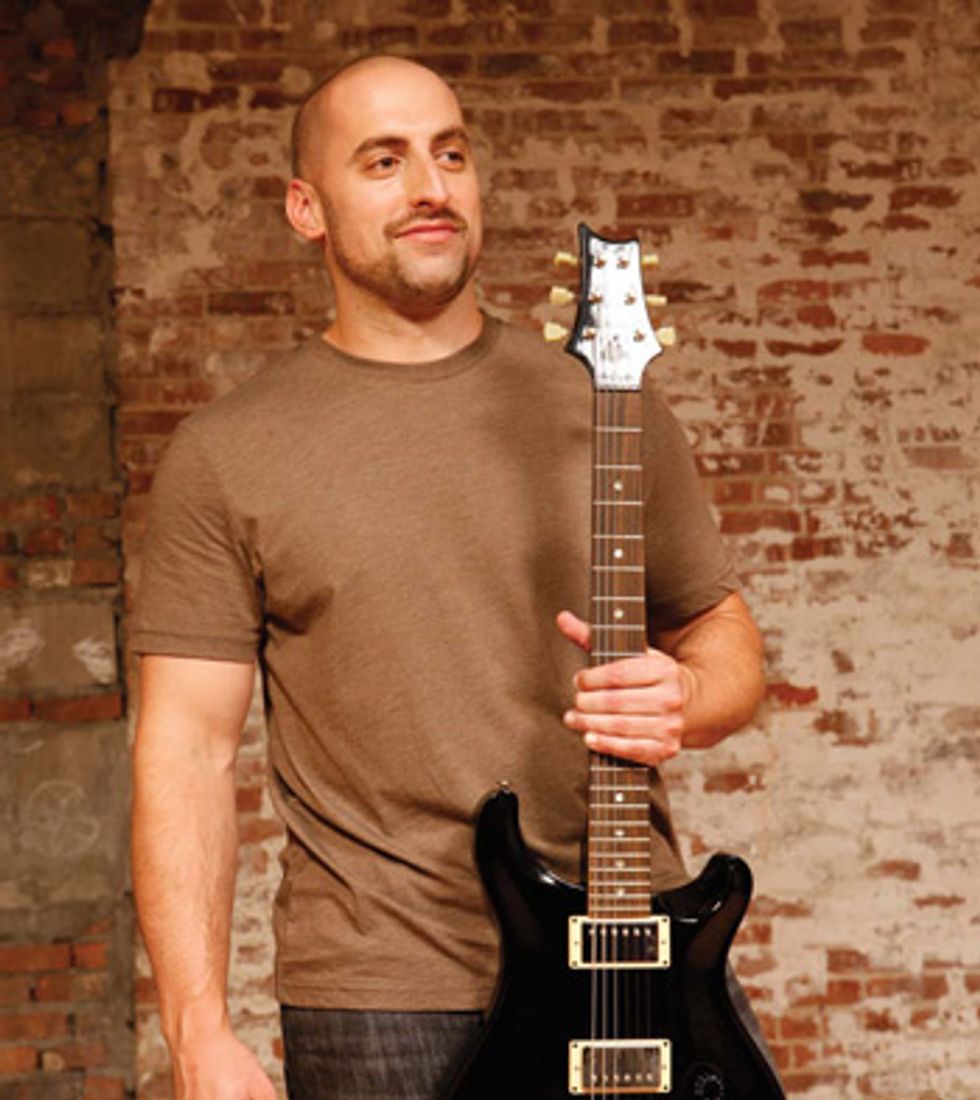 |
I started taking lessons when I was 8 years old. For four years, I just hated it—because I was in my, “I just want to play sports” phase. My dad bought me a Les Paul—which was just way too nice for me to have—when I was 10 years old. My friend Aaron was like, “You should start playing guitar again. You got that Les Paul sitting under your bed. It’s annoying.” [Laughs.] He got a band together and played one or two covers at a show called The Top 40 at my high school. The whole school went to see it. I thought that was really cool, so I said, “Wow, I wanna play in that show!” So we started jamming on songs together and getting whoever we could to play. Then we started getting into the heavy stuff and our local hardcore metal bands. Then I started playing shows with the local bands, and that’s how I met Phil and the whole music scene in our area.
Herbert: For me, it all started in 1988: I started taking lessons and it was all about metal— Metallica, Megadeth, Slayer. Primarily, I wanted to be a rhythm guitar player because that’s what drove me to really play. I wanted to play riffs. I didn’t like solos for the first year I was playing because I thought of [Poison’s] C.C. DeVille and that high-pitched wankery. Then I remember being in a high-school cafeteria and this dude was like, “Check this out!” It was King Diamond’s “A Mansion In Darkness.” I’m listening to it and the solo comes and I was like, “Oh my God! Whoever this guy is, he’s now my favorite guitar player!”
Andy LaRocque.
Herbert: Yeah! His playing just spoke to me. Yngwie-ish but not so over the top. He plays to the song, and that’s kind of who I’ve latched onto for all these years. Also all the guys of that era, like Marty Friedman, Alex Skolnick, and Jeff Waters from Annihilator.
Do you guys challenge yourself with other styles outside of the band?
Martin: No. I don’t practice enough to be versatile. Oli is in the back of the bus practicing 10 hours a day. I have no attention span for that at all. But I have been going on YouTube just to learn songs for fun. There’s a song by John Mayer called “Edge of Desire” that has a really cool guitar line through the whole thing.
Herbert: I’m really concentrating on jazz. I’m trying to perfect all my melodic minor scales and arpeggio fingerings—just trying to get the feel for it. It’s fun for me, and it’s interesting. I think it’s opened me up more. I’ve always dabbled, but I never really went full bore.
Do you play with any other bands?
Herbert: No. I’m doing instructional material for Rock House. I’d rather focus on that first to kind of get my points across. When I feel like the time is right, I’ll do a solo album and clinics and all that stuff.
Martin: The touring that we do is so unhealthy that there’s no time for anything else. [Laughs.] I’m not good enough to do a solo record by any means.
Oh please! I really dig your playing.
Martin: Thank you! But I don’t think I have enough material—I don’t think I could write a whole record by myself. If there was time to do a side thing, I would like to play in a regular rock band. Something less heavy.
What’s your number-one guitar?
Herbert: I play the Ibanez Xiphos 27-fret. I like the way the neck feels. I think it has a cool shape. It balances well both standing and sitting, and I can swing it up on either leg and do some cool stuff.
Martin: I just got a PRS Custom 22, which is the most awesome guitar. It’s my favorite guitar that I’ve ever touched in my entire life.
What do you have on the floor?
Herbert: All I have is a Maxon OD808 Overdrive, Boss NS-2 Noise Supressor, Boss DD-5 Digital Delay, and a tuner. I’m not really a gear guy.
Martin: I use a Maxon OD-9 Overdrive and a Boss NS-2 Noise Supressor, but I’m a complete moron—I can barely hook my own stuff up. Take the guitar tech away from us and we’re screwed.
How about amps?
Herbert: I use a Peavey 5150 II head with Mesa/ Boogie 4x12 cabs. I think it’s a fantastic amp. I’ll tell you what, though, I would kill for a block letter one—the first one. I think those are the best. That’s what I recorded the album with. When you talk about this era of metal, that’s the head that’s most used. You don’t see Marshalls as much as you used to. When we were on tour with As I Lay Dying and Iced Earth, we all used the same exact head. Maybe it was the EVH III in some cases, but it’s the same thing, basically.
Martin: The very first one is the best-sounding head I’ve heard in my entire life. I’m using the Peavey 6505 head with Mesa/Boogie cabs [Editor’s note: Peavey renamed the 5150 amp the 6505 after Edward Van Halen severed his relationship with the company]. Every time we try something else, it just doesn’t work for us.
Who did the talk box solo in “Won’t Go Quietly”?
Herbert: That’s Mike’s solo. He had gotten a talk box as a gift from a friend. I did my solo in the middle, and we were trying to think of what to do with the end part. We were like, “Dude, take a solo—talk box!” I don’t know if I was the one who said it, but it was kinda like we needed to use it on the record somehow.
Martin: I just wanted to add some feel—I wasn’t trying to reinvent rock guitar! [Laughs.] I’d never even played through one before, but it was a lot of fun. I’m psyched we put it on there. I think it’s a cool old-school effect to have in a modern metal band.
Herbert: Some people are going to hear that and say, “That’s cool.” Other people are going to go, “What the hell is this!? I don’t like this in my metal!” I think it’s tasty.
Oli Herbert's Gearbox
Guitars
Ibanez Xiphos 27-fret guitar, Ibanez S2170, Ibanez S1625, Takamine acoustic
Amps
Peavey 5150 II heads, Mesa/Boogie 4x12 cabs with Celestion speakers
Effects
Maxon OD808 Overdrive, Boss NS-2 Noise Supressor, Boss DD-5 Digital Delay
Strings and Picks
Ernie Ball strings (.012, . 016, .020, .032, .042, .054), Dunlop Jazz picks
Miscellaneous
Boss TU-2 tuner, Ernie Ball cables, DiMarzio ClipLock straps
Mike Martin's Gearbox
Guitars
PRS Custom 22s, Takamine acoustic
Amps
Peavey 6505 head, Mesa/Boogie 4x12 cabs with Celestion speakers
Effects
Maxon OD-9 Overdrive, Boss NS-2 Noise Supressor, “talk box” of unknown make
Strings and Picks
Ernie Ball strings (.012, .016, .020, .032, .042, .054), Dunlop 1 mm picks
Miscellaneous
Boss TU-2 tuner, Ernie Ball cables, DiMarzio ClipLock straps




![Rig Rundown: AFI [2025]](https://www.premierguitar.com/media-library/youtube.jpg?id=62064741&width=1245&height=700&quality=70&coordinates=0%2C0%2C0%2C0)












 Shop Scott's Rig
Shop Scott's Rig

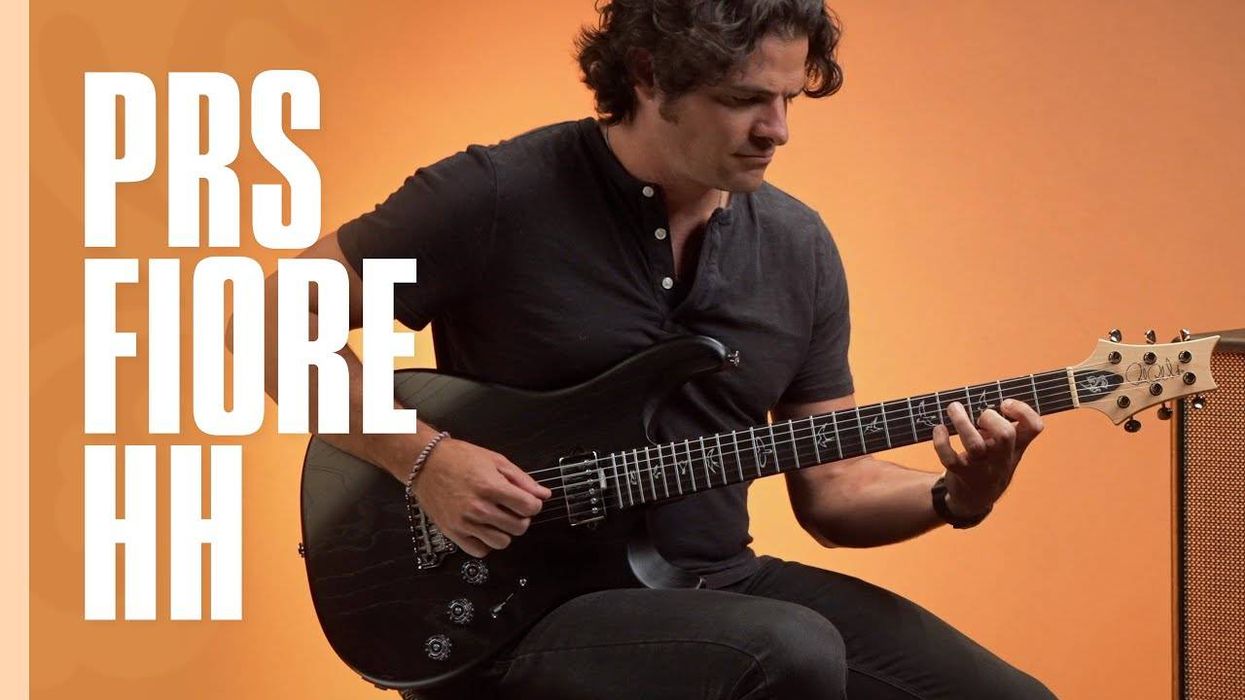

![Devon Eisenbarger [Katy Perry] Rig Rundown](https://www.premierguitar.com/media-library/youtube.jpg?id=61774583&width=1245&height=700&quality=70&coordinates=0%2C0%2C0%2C0)
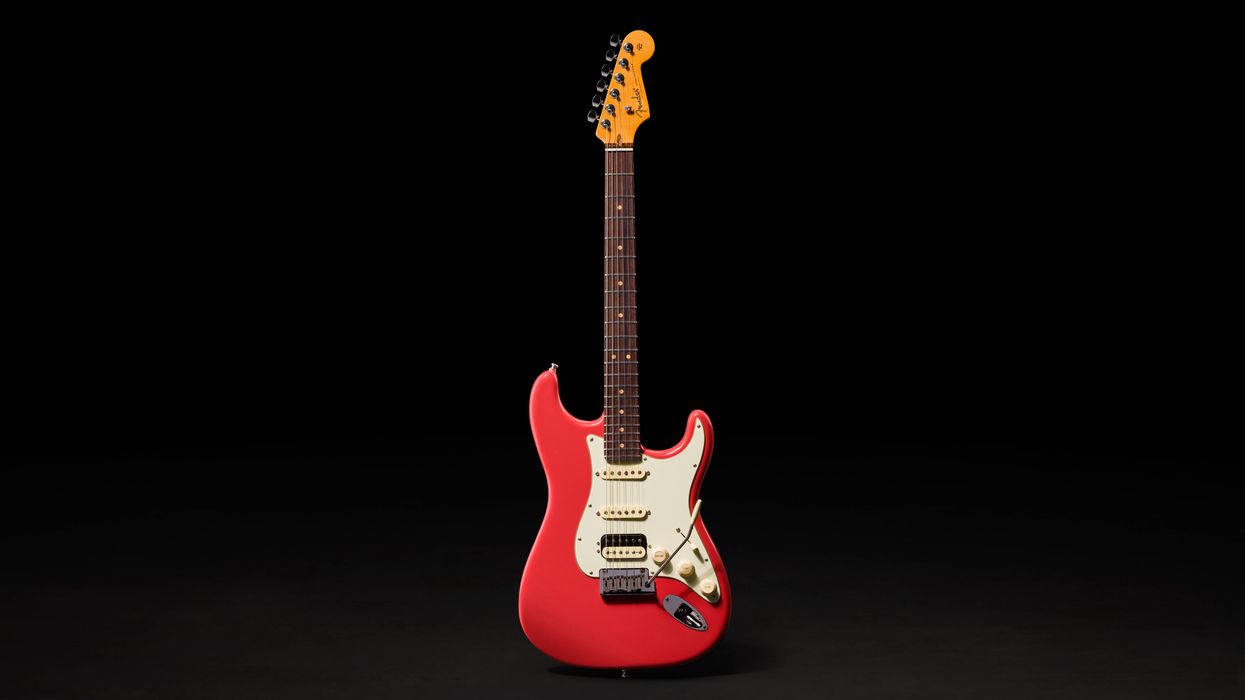








 Zach loves his Sovtek Mig 60 head, which he plays through a cab he built himself at a pipe-organ shop in Denver. Every glue joint is lined with thin leather for maximum air tightness, and it’s stocked with Celestion G12M Greenback speakers.
Zach loves his Sovtek Mig 60 head, which he plays through a cab he built himself at a pipe-organ shop in Denver. Every glue joint is lined with thin leather for maximum air tightness, and it’s stocked with Celestion G12M Greenback speakers.












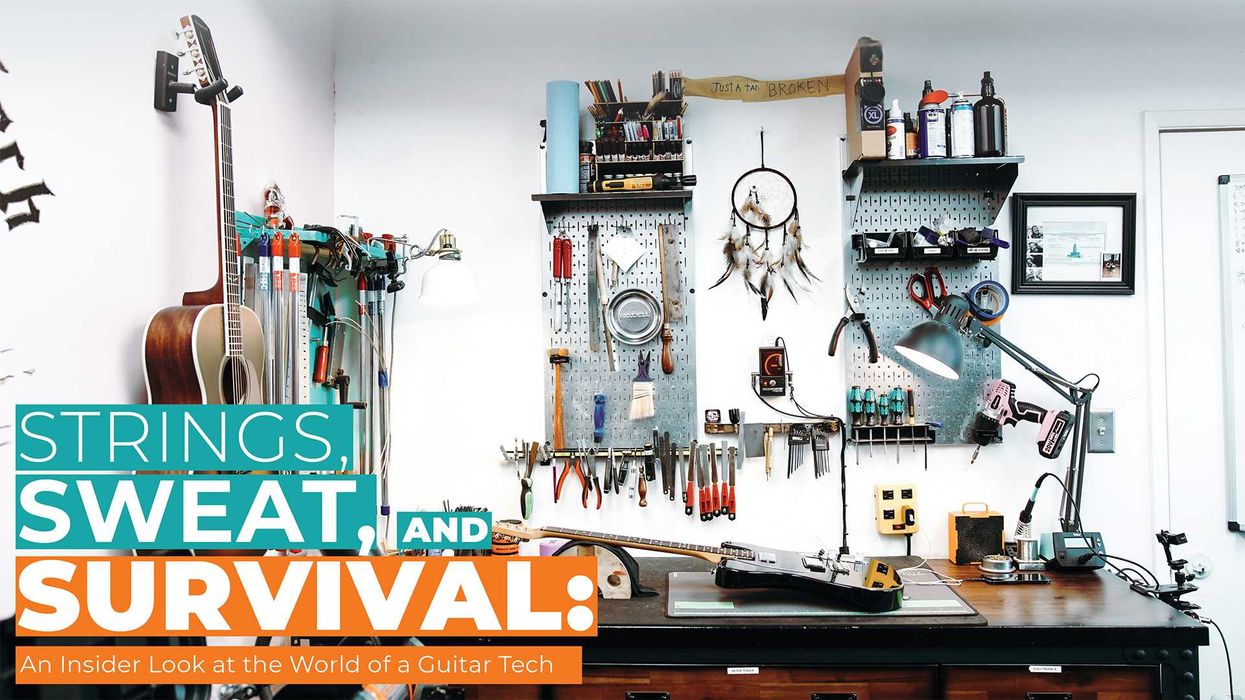
 Luis Munoz makes the catch.
Luis Munoz makes the catch.